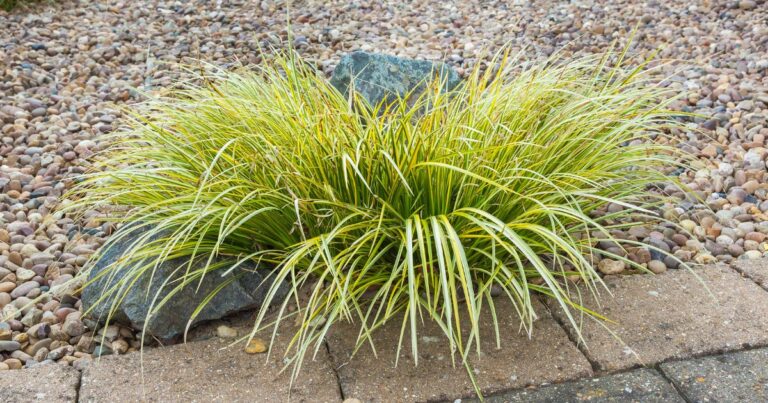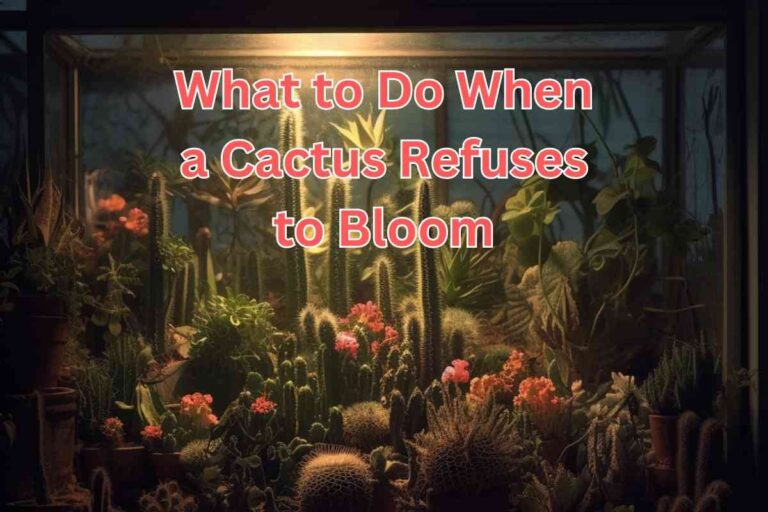How to Protect Succulents in Winter: Expert Tips and Tricks
Succulents are a popular choice for indoor and outdoor gardening due to their unique shapes and low maintenance requirements. However, when winter comes, succulents can be at risk of damage or even death if not properly protected. In this article, we will share some tips and tricks on how to care for your succulents during the winter months.

How to protect succulents in winter?
To protect succulents in winter, know what cold tolerance your species of succulent has. It may need no cover, or mulch or a blanket may be sufficient. Microclimates like a south-facing wall can help, or you may need to bring succulents inside or put them in a greenhouse.
Make sure to get a rundown on general succulent care so you know you have the right soil, lighting, and other conditions right before you get your succulents through winter.
Want to make some adorable arrangements to enjoy all winter? Check out these succulent design ideas.
Understanding Outdoor Succulents in Winter
Many people are resistant to keeping succulents outside because they think they can’t survive the cold. This isn’t true at all. Many succulents do just fine in winter with the right care.
Some succulents can handle temperatures as low as -30°F, while others may only tolerate temperatures above freezing.
Succulents that are naturally found in colder regions or high-altitude environments have evolved to tolerate freezing temperatures. These cold-hardy succulents have developed specialized structures, such as compact rosettes, waxy coatings, or modified leaves, which allow them to retain moisture and withstand temporary freezing conditions.
During the winter months, succulents enter a state of dormancy. This means that they slow down their growth and conserve energy to survive the colder temperatures. Succulents aren’t equipped to handle prolonged exposure to freezing temperatures or cold weather. However, many can handle brief freezes.

Why Can’t Succulents Handle Sustained Freezing?
Succulents are known for their ability to store water in their leaves, stems, or roots. This water reservoir helps them survive in arid climates, but it can also make them susceptible to damage from freezing temperatures.
When water stored within the succulent’s cells freezes, it expands, causing the cells to rupture. This can lead to irreversible damage and death of the plant.
How to Protect Outdoor Succulents in Winter
Choosing the Pot for Winter
Look for shallow pots. They prevent excess moisture retention and promote faster soil drying. This helps maintain optimal soil conditions and prevents the roots from sitting in water.
Good drainage is crucial for succulents to prevent waterlogging and root rot at any time, but succulents are especially prone to getting water-logged in the winter. Choose pots with ample drainage holes at the bottom.
Look for pots that are specifically rated for frost resistance. These pots are designed to withstand freezing temperatures without cracking or breaking. Look for pots labeled as frost-proof, frost-resistant, or suitable for all seasons.

In the absence of a frost-proof label, look for sturdy terracotta or concrete. These materials provide good insulation and durability. Avoid pots made of thin ceramic, as they are more prone to cracking or breaking in freezing temperatures.
Double-walled or foam-lined pots provide an extra layer of protection against extreme temperatures. Insulated pots help regulate the soil temperature, preventing sudden temperature fluctuations that can be harmful to succulents.
Create Microclimates
The surrounding environment and microclimates make a huge difference in succulent winter survival. Succulents planted against a south-facing wall may benefit from the radiated heat, creating a slightly warmer microclimate that aids their survival during colder months.
Offer Protection
Something as simple as a cold frame, greenhouse, or even a protective layer of mulch can offer additional insulation and shield succulents from harsh winter conditions.
Covering your succulents with frost blankets or burlap can provide insulation and prevent frost damage.
If you have a large collection of succulents, consider overwintering them in a greenhouse or conservatory. These structures provide protection from the cold, while still allowing the plants to receive the light they need to survive.

Bring Them Inside
If you’re going to have extensive snow or freezes or your succulents aren’t cold-hardy, it may be best to bring them inside.
Put them in a sunny spot that receives indirect light, such as a windowsill or under grow lights.
Start Over in the Spring
Don’t want to deal with bringing an entire succulent garden inside every winter? That’s ok. Succulents are so easy to propagate that you can start over every year.
Taking cuttings and propagating pups from outdoor succulents during winter is a great way to keep your collection without all the effort.
By gathering the cuttings or pups in the fall, you ensure they are collected before the arrival of colder temperatures and potential frost. After harvesting the leaves, stem cuttings, or pups, allow them to callous over for a few days.
Callousing is the process by which the cut ends of the plant material form a protective layer, reducing the risk of rotting when they are planted. This step improves the chances of successful rooting and establishment.
Once the cuttings or pups have formed a callus, put them in seed trays with well-draining soil. During the winter months, succulents, including their propagated cuttings or pups, generally experience slower growth due to reduced sunlight and cooler temperatures. The slower growth rate means they don’t require as much space or nutrients, making seed trays or smaller containers sufficient.
As winter transitions into spring, the temperatures begin to rise and daylight hours increase. This is an ideal time to transplant the well-established cuttings or pups from the seed trays to their outdoor locations. You’ll have a beautiful and flourishing succulent garden in no time.

Indoor Succulent Winter Care
Light
Succulents require bright, indirect light to grow and thrive, so it’s important to place them in a location where they can receive plenty of natural light. On the other hand, windows tend to get drafty in the winter.
If natural light far enough from windows to evade drafts is limited, you can supplement with grow lights to ensure they get the light they need.
When using grow lights, make sure they are positioned close enough to the plants to provide sufficient light. The distance between the light and the plants should be between 6 and 12 inches. You should keep the lights on for at least 12 hours a day to mimic the natural daylight cycle.
Humidity
Succulents prefer low humidity, so their pretty happy in the dry air produced by heaters in the winter. However, most houseplants (and people) prefer higher humidity than the dry air produced by heaters.
Humidifiers are a great way to make yourself comfortable in the dry winter air and keep your tropical plants alive. However, your succulents should be kept as far from the humidifier as possible.
Ensure that the air around the succulents is circulating properly to prevent excess moisture from accumulating. A fan can be very helpful for this purpose.

Why Garden with Cold-Hardy Succulents?
Changing Colors
Many cold-hardy succulents display a stunning array of colors that change in response to temperature fluctuations. As the temperatures shift, you’ll notice vibrant succulents intensifying their hues, transitioning from greens to reds, purples, or even deep blues.
What a fun way to see the colors change in fall! Even in zones where most leaves don’t change color, you can count on some of your succulents giving you a show.
Lush Looks
Despite cold weather conditions, many of these succulents manage to maintain their plump and lush appearance. While other plants may wither and lose their vitality, cold-hardy succulents stay resilient, with their thick, fleshy leaves retaining moisture and giving them a healthy look even in harsh climates.
Surprising Resilience
It’s awe-inspiring to witness the tenacity of cold-hardy succulents. Despite facing freezing temperatures and challenging weather conditions, they continue to thrive. Their ability to endure and adapt showcases nature’s resilience and reminds us of the strength and beauty that can emerge from adversity.

Cold-Hardy Succulents
Stonecrop (Sedum):
- Sedum spectabile (Stonecrop): This succulent produces clusters of pink or white flowers and can tolerate freezing temperatures.
- Sedum rupestre (Reflexed Stonecrop): This low-growing succulent features fleshy, blue-green leaves and is capable of withstanding cold temperatures.
- Sedum kamtschaticum (Orange Stonecrop): With its bright orange flowers and hardy nature, this Sedum variety is well-suited for colder regions.
- Sedum spurium (Dragon’s Blood Stonecrop): This low-growing succulent has deep red foliage and is resilient in cold climates.
- Sedum album (White Stonecrop): This hardy succulent features tiny, star-shaped white flowers and can thrive in chilly climates.
- Sedum cauticola (Stonecrop): With its lovely blue-gray foliage and pink flowers, this sedum variety is known for its cold tolerance.
Hens and Chicks (Sempervivum):
- Sempervivum (Hens and Chicks): These hardy succulents form rosette-shaped clusters and come in a wide range of colors. They can endure cold winters without any issue.
- Sempervivum arachnoideum (Cobweb Houseleek): This captivating succulent forms rosettes with intricate web-like threads and can tolerate cold and frosty conditions.
- Sempervivum tectorum (Common Houseleek): This classic succulent has rosettes in various colors and can endure cold winters without issue.

Agave:
- Agave parryi (Artichoke Agave): Native to the southwestern United States, this succulent has thick, blue-gray leaves with spines along the edges. It can handle frost and cold conditions.
- Agave americana (Century Plant): While some Agave species are sensitive to frost, Agave americana, with its large, architectural rosettes, can handle cold spells.
Opuntia (Prickly Pear Cactus):
- Opuntia (Prickly Pear Cactus): This iconic cactus variety is known for its flat, paddle-shaped pads and colorful flowers. Many Opuntia species are cold-tolerant and can thrive in colder climates.
Yucca:
- Yucca filamentosa (Adam’s Needle): With its sword-shaped leaves and tall flower spikes, this yucca species is highly adaptable and can endure freezing temperatures.
Echeveria:
- Echeveria spp. (Echeveria): These rosette-forming succulents come in various colors and are generally frost-tolerant, making them suitable for colder climates.
Ice Plant:
- Delosperma cooperi (Ice Plant): This ground-cover succulent boasts vibrant purple-pink flowers and can tolerate frost and freezing temperatures.
Dunce’s Caps:
- Orostachys iwarenge (Dunce’s Caps): This unique succulent has cylindrical, cone-shaped rosettes and can survive cold winters by going dormant.
- Orostachys fimbriata (Green Dunce Cap): Similar to the Dunce’s Caps mentioned earlier, this succulent has distinctive green rosettes and can withstand cold temperatures.

Conclusion
Succulents aren’t exactly made for the cold, but these tough plants can survive surprisingly cold temperatures. By providing them with the right protection for their species, you can get your succulents through the winter, and enjoy them even as the days get colder.
Propagating succulents is one great way to make sure your collection survives the winter. Here are some tips for propagating succulents that you may not have seen before.
Sick of trying to get your succulents to survive winter? There’s no shame in gardening with artificial succulents. Don’t worry, I won’t tell.
Should I repot my succulent in the winter?
Repotting your succulents in winter is not recommended as they are in a dormant state. Repotting can prompt growth at a time when the succulent shouldn’t be growing, resulting in poor or leggy growth. If you notice that your succulent has outgrown its pot or the soil is compacted, you can repot it in early spring.
Should I prune my succulents in the winter?
Pruning your succulents in winter is not necessary unless you notice any dead or damaged leaves or stems. Pruning can be done in early spring when the plant starts to produce new growth. If you’d like to start pups in the winter, some light leaf pruning is fine.
Should I fertilize my succulent in the winter?
During the winter months, succulents go dormant and their growth slows down. Feeding succulents during the winter is not necessary, and can even be harmful. Succulents don’t require as many nutrients in the winter. Overfeeding during this time can lead to yellowed leaves, root rot, and other problems.
Should I cover my succulents in winter?
Covering your succulents can help protect them from frost and freezing temperatures, but it is not always necessary. If you live in an area with occasional frost, you can cover your succulents with frost cloth or blankets. However, if you live in an area with prolonged freezing temperatures, it is best to bring your succulents indoors or move them to a sheltered area.
How often to water succulents in winter?
Succulents need less water in the winter, as they become dormant during this time. Water your succulents only when the soil is completely dry, and avoid overwatering. It is best to water them from the bottom, by placing them in a tray of water and letting them soak up the moisture.
Covering your succulents can help protect them from frost and freezing temperatures, but it is not always necessary. If you live in an area with occasional frost, you can cover your succulents with frost cloth or blankets. However, if you live in an area with prolonged freezing temperatures, it is best to bring your succulents indoors or move them to a sheltered area.
“}},{“@type”:”Question”,”name”:”How to protect succulents from frost?”,”acceptedAnswer”:{“@type”:”Answer”,”text”:”
To protect your succulents from frost, you can cover them with frost cloth or blankets. You can also move them to a sheltered area, such as a covered porch or next to a sheltered wall. Avoid using plastic covers, as they can trap moisture and cause your succulents to rot.
“}},{“@type”:”Question”,”name”:”How often to water succulents in winter indoors?”,”acceptedAnswer”:{“@type”:”Answer”,”text”:”
Succulents need less water in the winter, as they become dormant during this time. Water your succulents only when the soil is completely dry, and avoid overwatering. It is best to water them from the bottom, by placing them in a tray of water and letting them soak up the moisture.
“}},{“@type”:”Question”,”name”:”How to keep succulents alive indoors?”,”acceptedAnswer”:{“@type”:”Answer”,”text”:”
To keep your succulents alive indoors, make sure they are getting enough light. Succulents need bright, indirect light to thrive. You can also use a grow light if you do not have access to natural light. Make sure to water your succulents only when the soil is completely dry, and avoid overwatering.
“}},{“@type”:”Question”,”name”:”Which succulents can stay outside in winter?”,”acceptedAnswer”:{“@type”:”Answer”,”text”:”
Some succulents are more cold-hardy than others and can tolerate freezing temperatures. These include Sempervivum, Sedum, and Hens and Chicks. However, it is still best to protect them from prolonged freezing temperatures.
“}},{“@type”:”Question”,”name”:”What do I do with my outdoor succulents in the winter?”,”acceptedAnswer”:{“@type”:”Answer”,”text”:”
If you live in an area with prolonged freezing temperatures, it is best to bring your outdoor succulents indoors or move them to a sheltered area. You can also cover them with frost cloth or blankets to protect them from frost. If you live in an area with occasional frost, you can leave your succulents outside and cover them when necessary.
“}}]}






